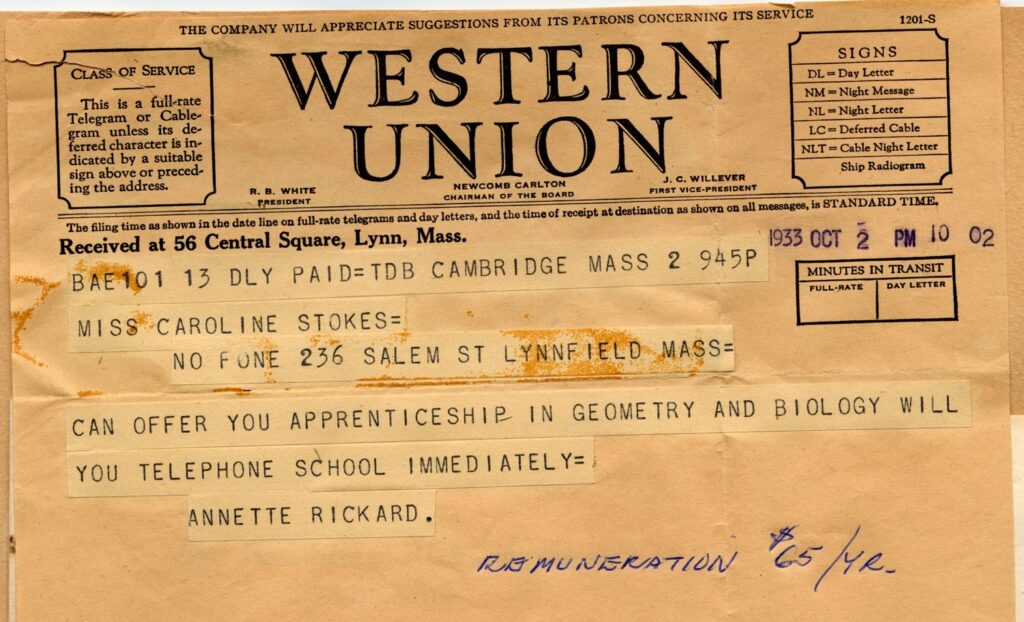YouTube became the world’s #1 media-sharing platform after failing as a video dating service. Play-Doh’s famous arts and crafts material was originally used to clean wallpapers. Wrigley’s chewing gum was just a marketing trick to promote baking powder.
Discover these and other drastic shifts in business models and learn more about pivot in entrepreneurship.
YouTube Was Built as a Dating Website
Co-founders Steve Chen and Jawed Karim initially envisioned YouTube as a platform for users to upload videos talking about their dream partners. With the slogan “Tune in, Hook up,” they sought to create a digital matchmaking space.
The service even offered women $20 for uploading their videos but that wasn’t enough to convince them.
Yet, the founders didn’t give up. They decided to open the platform to any type of video. The first one was uploaded by Jawed Karim himself. It was titled Me At The Zoo.
The next year, Google purchased YouTube for $1.65 billion. There are over 800 million videos on YouTube now.
Play-Doh Started Out as a Wallpaper Cleaner
Before becoming a favorite arts and crafts material for children, Play-Doh had an unusual purpose – it was a wall cleaner.
In the 1930s, parent company Kutol designed Play-Doh as a putty to remove black residue from wall-mounted coal heaters. However, as oil and gas heaters gained popularity, demand for the wall cleaner declined.

The drastic company pivot occurred when a local teacher, Kay Zufall, started using the putty in arts and crafts classes. After realizing its creative potential, the company rebranded and distributed Play-Doh to kindergartens. This resulted in over 2 million cans distributed worldwide.
Today, Hasbro owns Play-Doh which boasts an impressive market cap of $14 billion.
Wrigley’s Used Chewing Gum to Promote Baking Powder
Wrigley’s path to confectionery greatness began in the late 19th century when it sold soap and baking powder.
To entice customers, the company offered chewing gum as a bonus with their baking powder purchases. Surprisingly, the chewing gum became a runaway hit, outshining the original products.
Recognizing the sweet potential, Wrigley’s made a bold decision to focus entirely on chewing gum production. This strategic pivot catapulted Wrigley’s to become one of the world’s largest manufacturers of chewing gum and other confectionery items.
Nokia Used to Sell Toilet Paper and Rubber Boots Before Mobile Phones
Nokia was founded as a paper mill in Finland in 1865. It expanded into numerous industries before eventually making the first mass-produced mobile phone in 1992. Learn more about the rise and fall of Nokia and its multiple pivots.
Android Was Developed for Digital Cameras
Android was pitched to investors in April 2004 as a next-gen operating system designed for digital cameras.
Yet, it didn’t take long for its founders to understand that their OS could compete in a market with a much bigger potential. By late 2004, they switched their focus to the mobile industry, challenging Windows Mobile and Symbian.
This is now considered an iconic pivot in startup history but back then it was just $10,000 away from a failure. This amount of cash Android co-founder Andy Rubin received from his famous friend Steve Perlman when Android was on the edge of eviction from its office.
Perlman later provided seed funding for Android, helping it gain traction before it was acquired by Google in mid-2005.
Android’s pivot business model paid off, and it’s now a dominant player in the mobile operating system arena.
This story also shows that the ability to improvise, adapt, and overcome is very important in business. But having rich and powerful friends doesn’t heart either.
Netflix Used to Mail Movies Before Streaming
Before becoming the global streaming giant we know today, Netflix started as a DVD rental-by-mail service in 1997.
Founded by Reed Hastings and Marc Randolph, the company aimed to provide customers with convenient access to movies and TV shows.

Realizing the potential of online streaming in the mid-2000s, Netflix underwent a transformative pivot, disrupting the traditional video rental market. By offering a vast library of digital content that customers could instantly stream, they revolutionized the way people consumed entertainment.
Today, Netflix not only streams content from other creators but also produces a wide range of critically acclaimed original series and movies, reshaping the entire entertainment industry.
By the way, Netflix announced the shutdown of its DVD mailing service only in 2023.
Instagram: From Cluttered App to Photo-Sharing Sensation
Instagram’s journey began as Burbn, an app with gaming elements and various features, including photo sharing.
Co-founded by Kevin Systrom and Mike Krieger, the app’s initial concept proved to be overwhelming and cluttered.
Concerned about potential user confusion, the founders made a daring decision to strip away all features but one: photos. They rebranded as Instagram in 2010, a name combining “instant camera” and “telegram,” and focused solely on photo-sharing.
This strategic pivot turned out to be a stroke of genius, as the sleek and simple app quickly gained popularity, eventually becoming the world’s most popular photo-sharing app.
Tiffany & Co.: From Stationery to Jewelry
Tiffany & Co. has a rich history that dates back to 1837 when Charles Lewis Tiffany and John B. Young established their “stationery and fancy goods emporium”.
The store in New York City offered a wide range of upscale merchandise, including jewelry. However, it was in the mid-19th century when the company shifted its primary focus from stationery to jewelry and luxury items.
Under the leadership of Charles Tiffany, the company established itself as a purveyor of exquisite jewelry, becoming one of the world’s most renowned luxury brands.
Today, Tiffany & Co. is celebrated for its high-end designs, including the iconic engagement rings and the legendary blue boxes.
Nintendo Originally Was a Playing Card Manufacturer
Nintendo’s fascinating history began in 1889 when Fusajiro Yamauchi founded the company as a playing card company in Kyoto, Japan.
Despite achieving moderate success in various ventures, it was the pioneering step into the video game industry in the 1980s that set Nintendo on a path to greatness.
Under the visionary leadership of Hiroshi Yamauchi, Nintendo launched the Nintendo Entertainment System (NES) in 1985, which introduced iconic characters like Mario and games like Super Mario Bros. and The Legend of Zelda.
Starbucks: From Espresso Makers to Coffeehouse Sensation
Starbucks, now a ubiquitous coffeehouse chain, had humble beginnings in 1971 when it was founded as a store selling high-quality coffee beans and espresso makers.
It wasn’t until 1983 that the company underwent a transformative pivot, forever changing the coffee culture in the United States.
During a trip to Italy, Howard Schultz, the current chairman, president, and CEO of Starbucks, was inspired by the Italian coffeehouse culture. Recognizing the potential of creating a European-style coffeehouse experience in the United States, Schultz convinced the company to pivot from merely selling coffee supplies to brewing and selling its own coffee in a cozy and welcoming ambiance.
Twitter (X) Was All About Podcasts and Close to a Failure
Odeo, a platform for discovering and subscribing to podcasts, faced a challenging situation in 2005 when Apple’s iTunes dominated the podcast niche. With the threat of potential demise, the company needed a game-changing solution.
In a two-week brainstorming session, Twitter’s co-founders Jack Dorsey and Biz Stone came up with the idea of a status-updating micro-blogging platform. Recognizing the potential of this unique concept, Odeo decided to take a bold risk and pivot to Twitter in 2006.

The strategic move to Twitter proved to be a stroke of genius, transforming the company into a social media giant. Twitter revolutionized the way people communicate and share information globally, giving rise to real-time news updates, hashtag movements, and viral trends.
IBM: From Tabulating Machines to Mainframe Computers
IBM’s impressive history dates back to 1911 when it was established as the Computing-Tabulating-Recording Company (CTR).
Initially, the company manufactured punched card tabulating machines and time clocks, catering to data processing needs in various industries. However, the mid-20th century brought a seismic shift in technology, and IBM recognized the vast potential of computers.
In a strategic pivot, IBM shifted its focus from tabulating machines to developing and selling mainframe computers, becoming a pioneer in the burgeoning computer industry. Their mainframes revolutionized data processing, enabling businesses, government agencies, and research institutions to handle massive amounts of information efficiently.
IBM’s expertise and innovations in computing technology solidified its position as a major player in the computer industry for decades, earning it a reputation as a reliable and cutting-edge technology partner.
LEGO Used to Produce Wooden Toys
LEGO, founded in Denmark in 1932 by Ole Kirk Christiansen, started its journey as a producer of wooden toys.
Responding to the growing popularity of plastic toys and recognizing the potential for creative play, LEGO transitioned from wooden toys to producing iconic plastic interlocking building bricks in 1949.
The patented brick design allowed children to build and create endless structures, sparking their imagination and paving the way for LEGO’s global success.
Over the years, LEGO continued to innovate, introducing a vast array of themed sets tied to popular franchises like Star Wars and Harry Potter. This strategic move, along with a commitment to quality and creativity, rejuvenated the company and established it as one of the leading and most beloved toy manufacturers globally.
Amazon Was Once Nothing More Than an Online Bookstore
Founded in 1994 by Jeff Bezos as an online bookstore, Amazon quickly made its mark in the digital landscape. However, Bezos had grander ambitions and recognized the potential of e-commerce beyond bookselling.
In the late 1990s, Amazon expanded its product offerings to include a wide range of items, from electronics to clothing, becoming an all-encompassing online marketplace.
This strategic move paid off as Amazon became the world’s largest online retailer, offering customers unprecedented convenience and access to an extensive selection of products.
Bezos’ visionary decision-making also led to the introduction of Amazon Prime, a subscription service offering fast shipping and digital content, further revolutionizing the retail industry.
Today, Amazon’s influence extends far beyond e-commerce, as it is a major player in cloud computing, digital content, artificial intelligence, and other cutting-edge technologies.
Flickr Started Out as an Online RPG
Flickr’s origins as an online role-playing game called Game Neverending might seem unusual for a photo-sharing platform.
However, within the game, the photo-sharing tool gained surprising popularity as users embraced its creative potential. Recognizing the untapped potential, the company decided to pivot and transformed “Game Neverending” into the photo-sharing platform we know as Flickr in 2005.
This move propelled Flickr to become one of Yahoo!’s most beloved and successful acquisitions. The platform’s user-friendly interface, ease of sharing, and vibrant online communities made it a go-to destination for photography enthusiasts and casual users alike.
Western Union Switched From Telegrams to Money Wires
A titan in the telegram service industry from 1851 to the 1980s, Western Union faced a challenging period as telegrams lost favor with the advent of telephones. However, the company astutely pivoted to a new niche: money wire services.

Leveraging its well-established network, Western Union found success in the financial services industry. It still plays a vital role in modern money transfers.
Hewlett-Packard (HP) Started With Electrical Testing Products
Hewlett-Packard (HP) started as an engineering company in 1939, founded by Bill Hewlett and Dave Packard in a garage in Palo Alto, California. Initially, the company’s primary focus was on producing electrical testing products, such as audio and signal generators, which gained popularity in various industries.
In 1990, HP made a crucial pivot that would significantly impact its future trajectory. Recognizing the rising demand for personal consumer-friendly computers, the company shifted its focus to promote home computers to the American market.
This strategic move involved diversifying its product line to cater to individual consumers, developing user-friendly interfaces, and investing in marketing campaigns that highlighted the value of personal computing.
This transformation proved successful, as HP established itself as a prominent manufacturer of home computers, laptops, and other consumer electronics.
Suzuki Invented Weaving Loom Machines
Suzuki, founded in 1909 by Michio Suzuki, initially gained fame for inventing weaving loom machines that powered Japan’s silk industry.
However, diversifying the company’s offerings was essential for its survival in the changing industrial landscape. In the early 1950s, Suzuki made a radical pivot, shifting its focus from loom machines to manufacturing motorcycles and sports vehicles.
This strategic move propelled Suzuki to become a leading player in the automotive industry. The company’s commitment to precision engineering, innovative designs, and high-performance motorcycles and vehicles garnered a dedicated following of enthusiasts.
Over the years, Suzuki expanded its portfolio, producing a diverse range of automobiles, motorcycles, and all-terrain vehicles (ATVs) that catered to various market segments.
Avon Went Digital After Going Door-to-Door for a Century
Avon, originally known as the California Perfume Company, was founded in 1886 by David H. McConnell. The company started as a door-to-door seller of perfumes, with McConnell himself acting as the first “Avon Lady.”
As consumer behavior shifted with the rise of e-commerce, Avon faced challenges in the traditional direct-selling model. In response, the company made a pivot in the late 20th century by transitioning to a digitally focused approach.
Emphasizing online sales and leveraging social media marketing, Avon adapted to the digital era, allowing them to maintain their prominence in the beauty industry and reach a global customer base.
FAQ
What’s pivot meaning in business?
In business, a pivot refers to a significant change in a company’s strategy, product, or focus, often in response to changing market conditions, customer needs, or to seize new opportunities.
What is a business pivot strategy?
A business pivot strategy is a deliberate and strategic shift in a company’s direction, designed to adapt to market changes or capitalize on emerging trends. It involves altering core elements of the business, such as products, target market, or business model.
What are some examples of a business pivot?
Netflix: Transitioning from DVD rental-by-mail to digital streaming.
Starbucks: Evolving from selling espresso makers to becoming a global coffeehouse chain.
LEGO: Shifting from producing wooden toys to iconic plastic building bricks.
Twitter: Originally a podcast network (Odeo), it pivoted to become a micro-blogging platform.
IBM: Transforming from tabulating machines to developing and selling mainframe computers.
Amazon: Expanding from an online bookstore to a diverse e-commerce platform with various products and services.








[…] Birthday to You” was featured in the first-ever singing telegram delivered by Western Union (yes, Western Union was a telegram service giant before switching to money […]